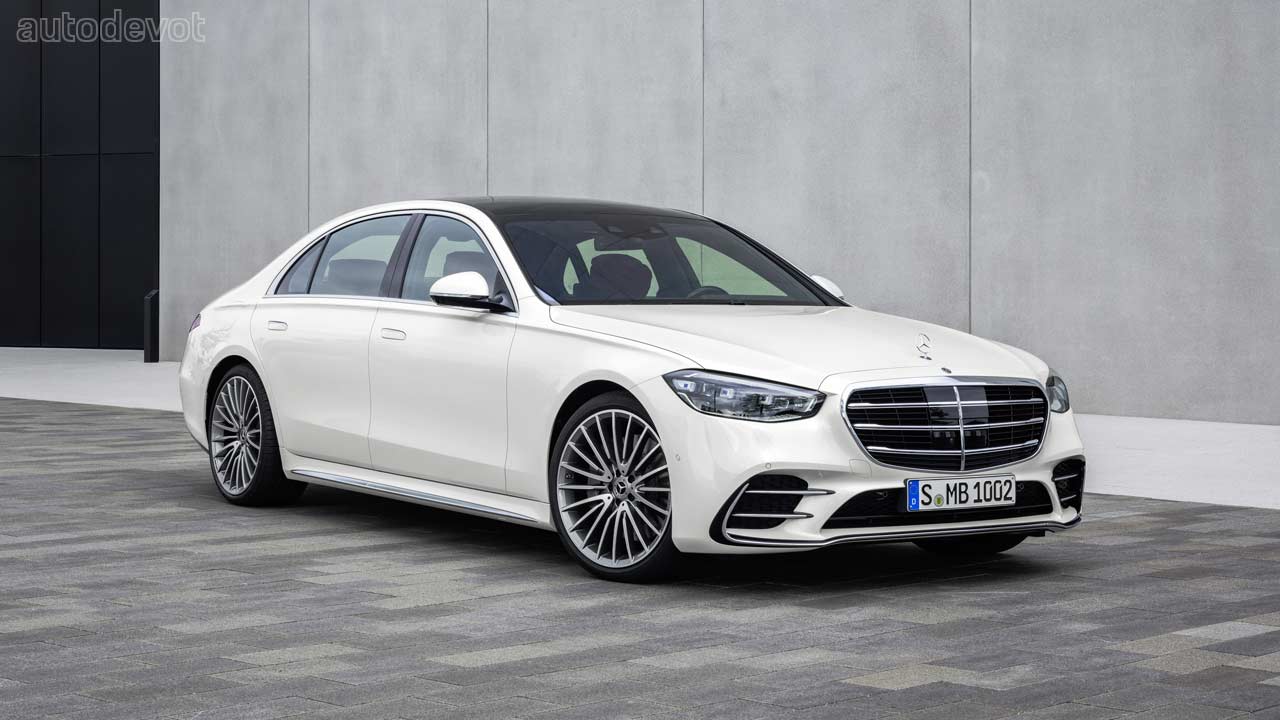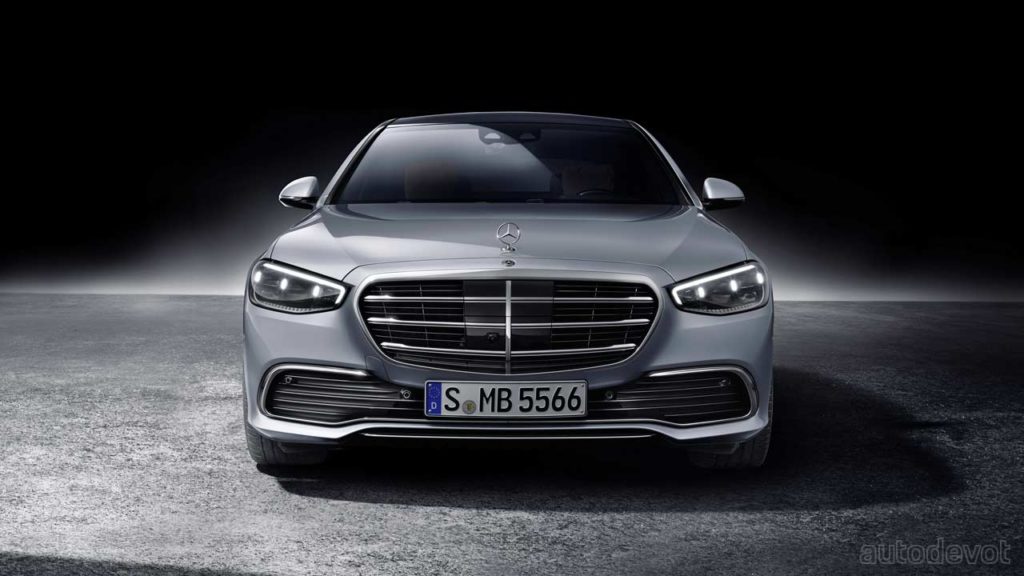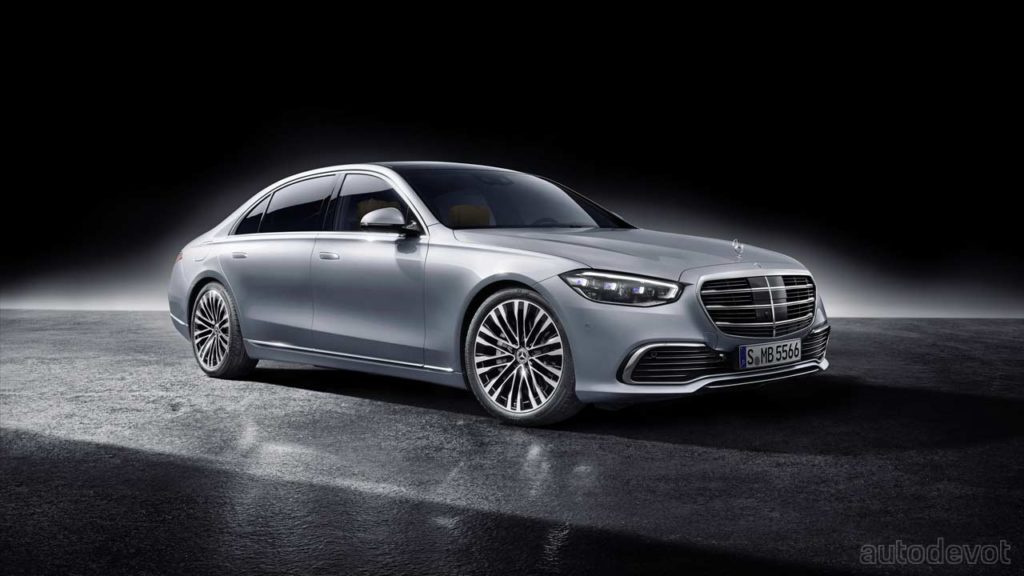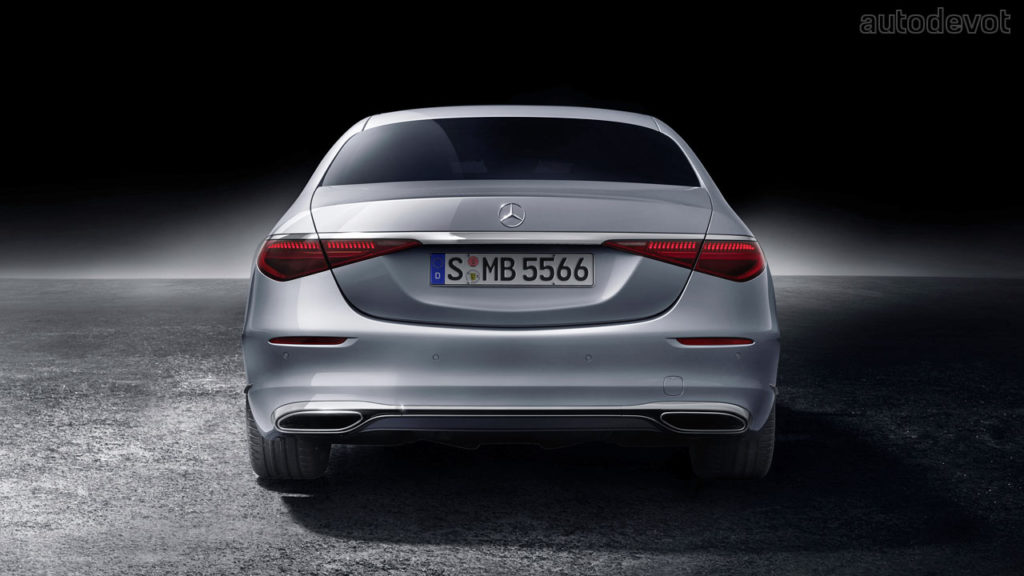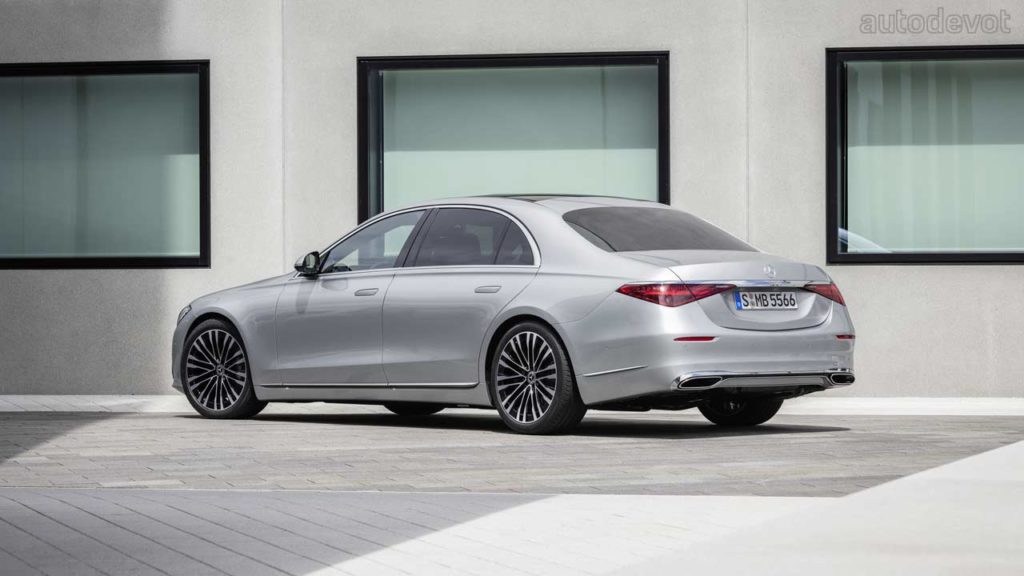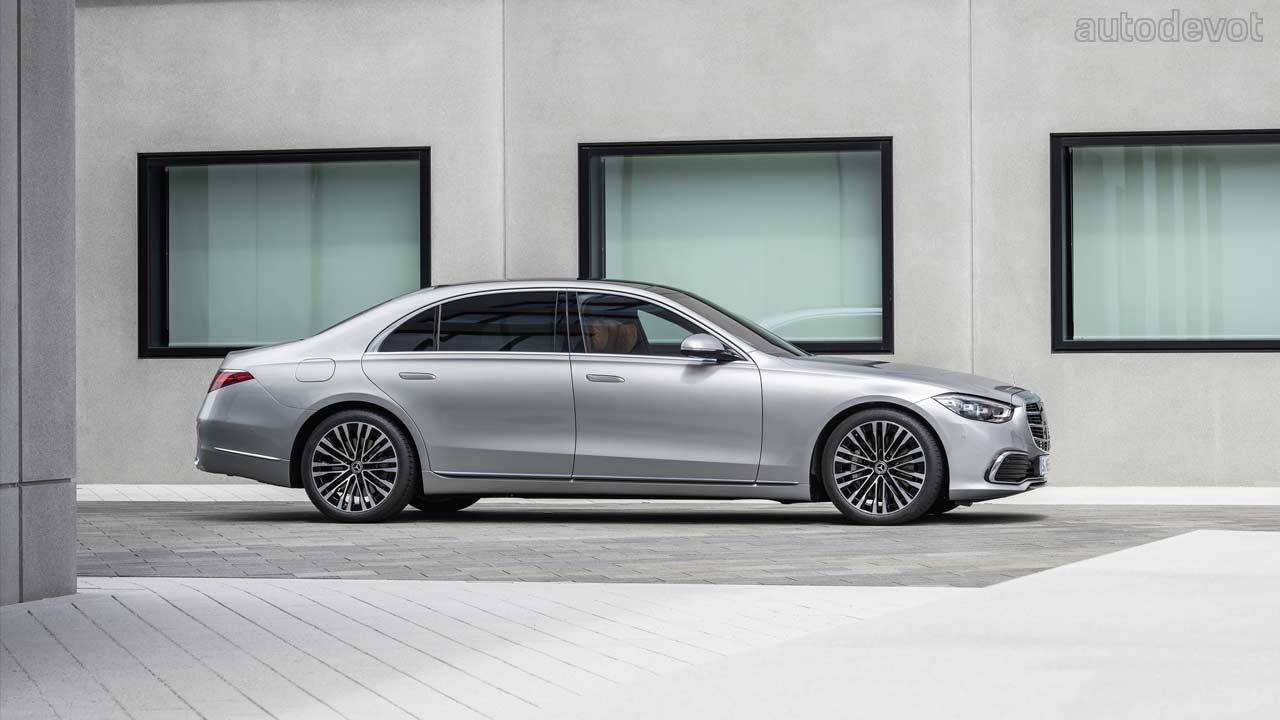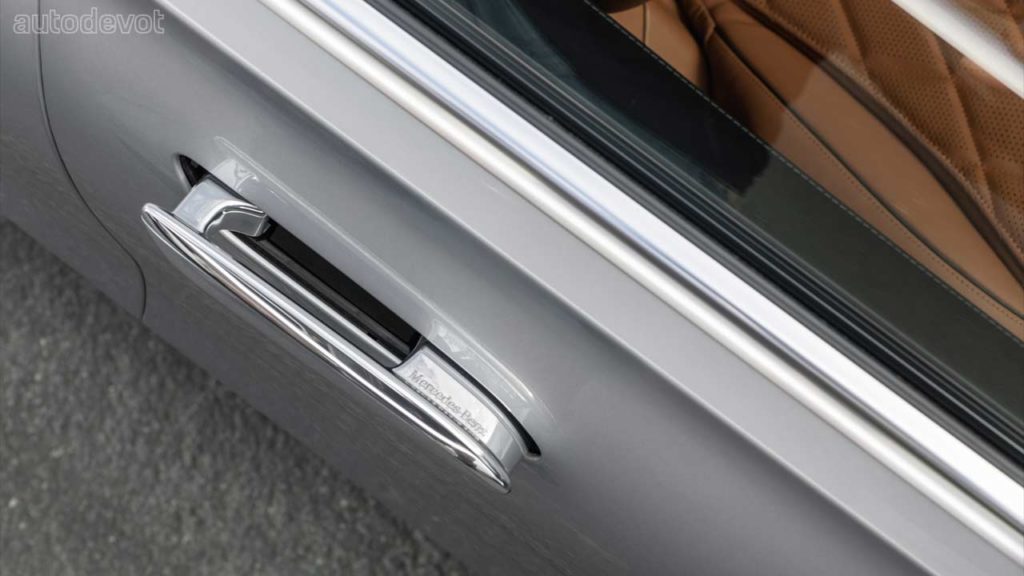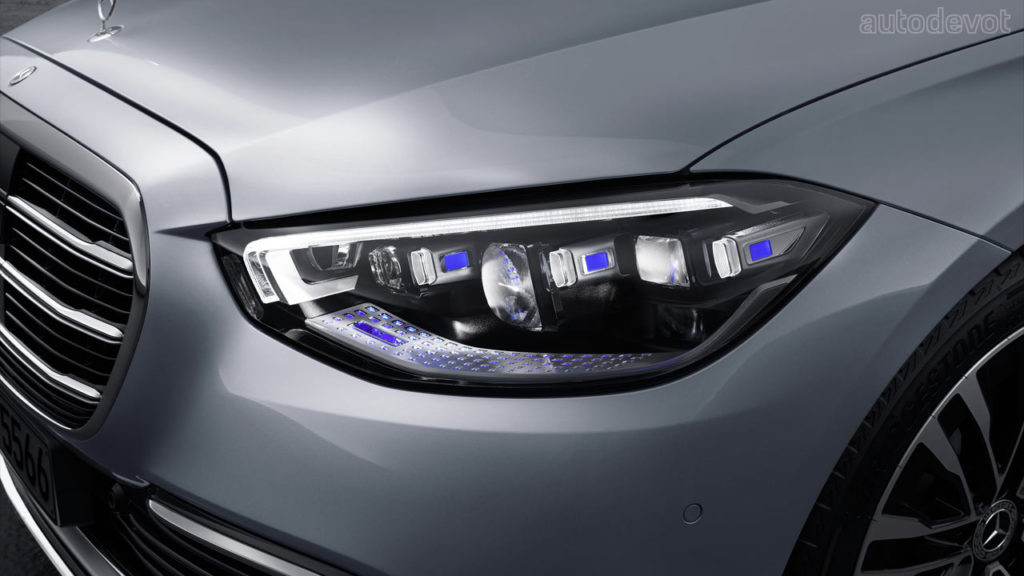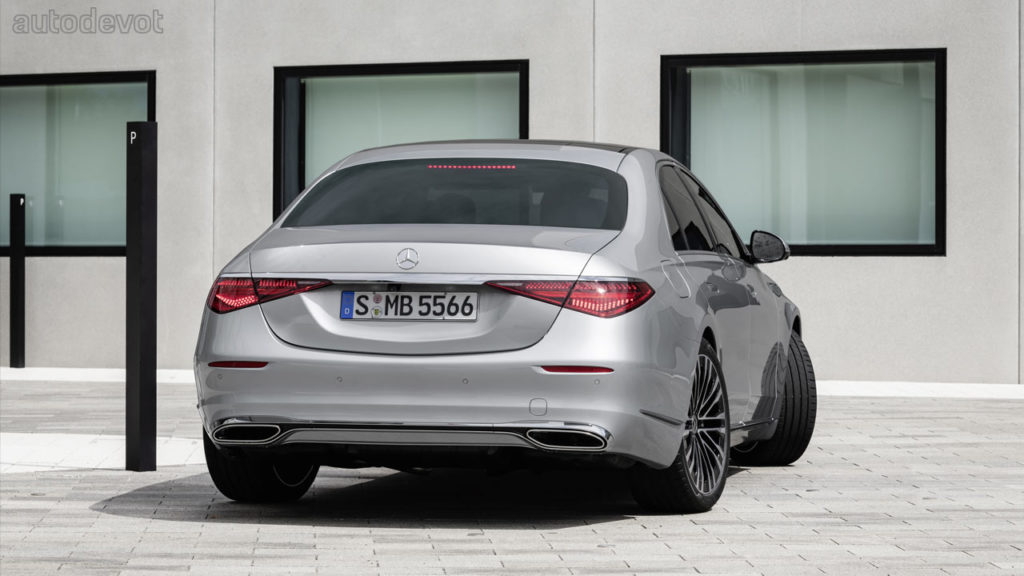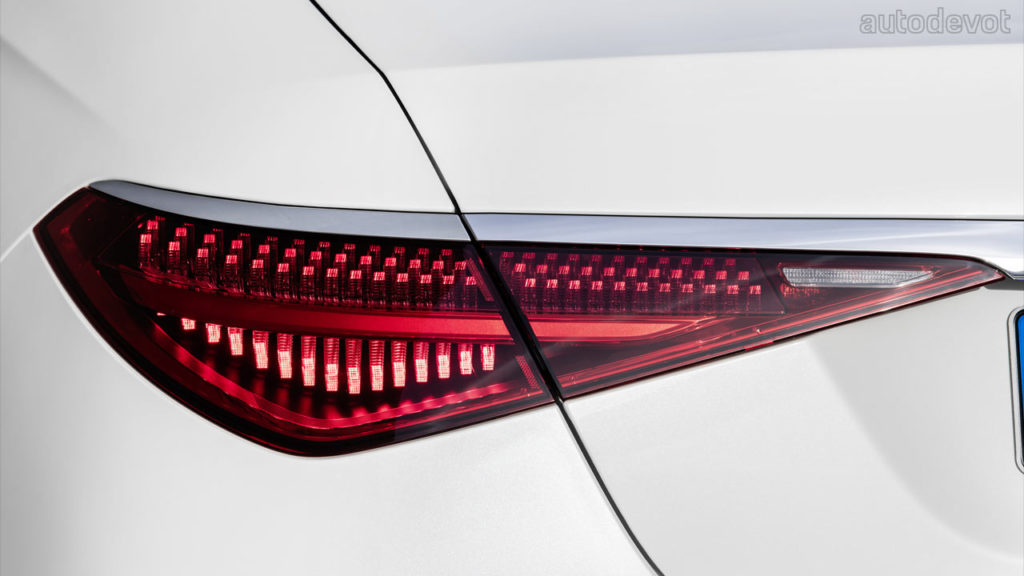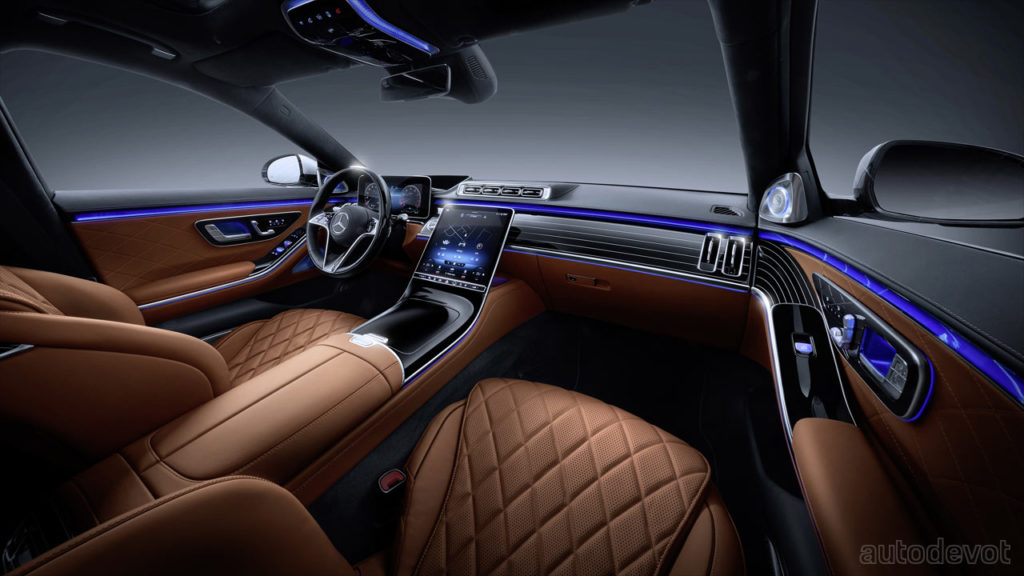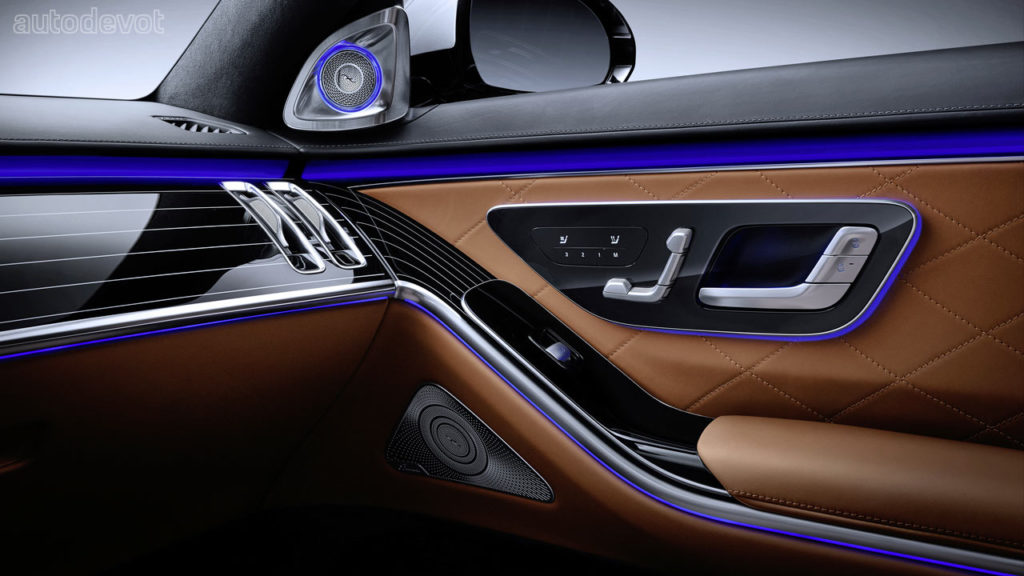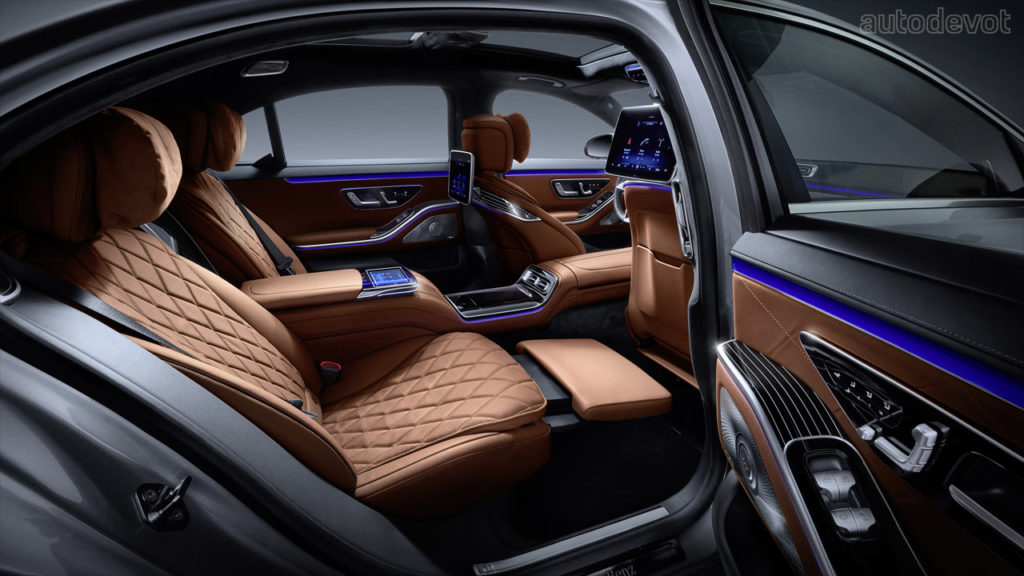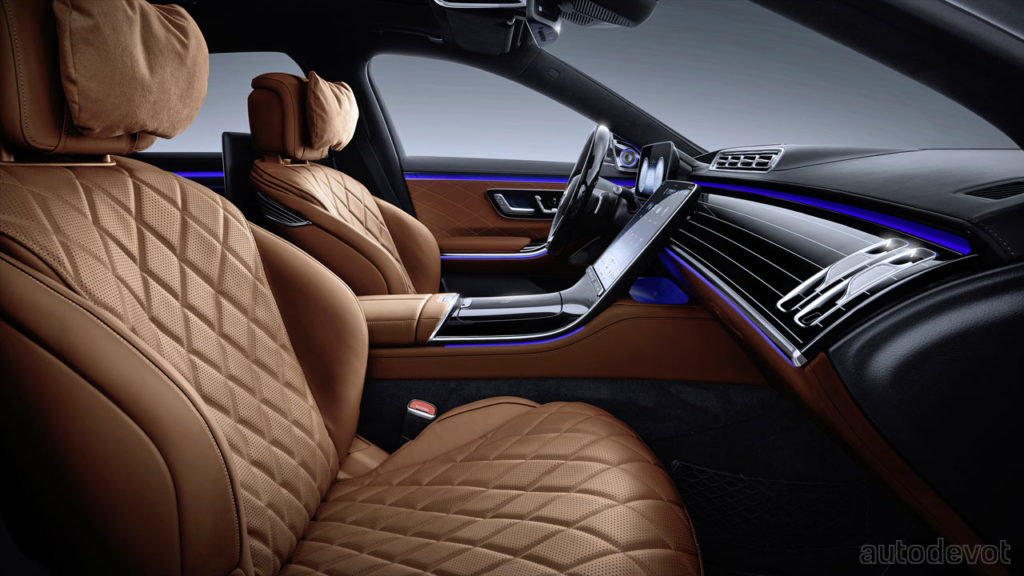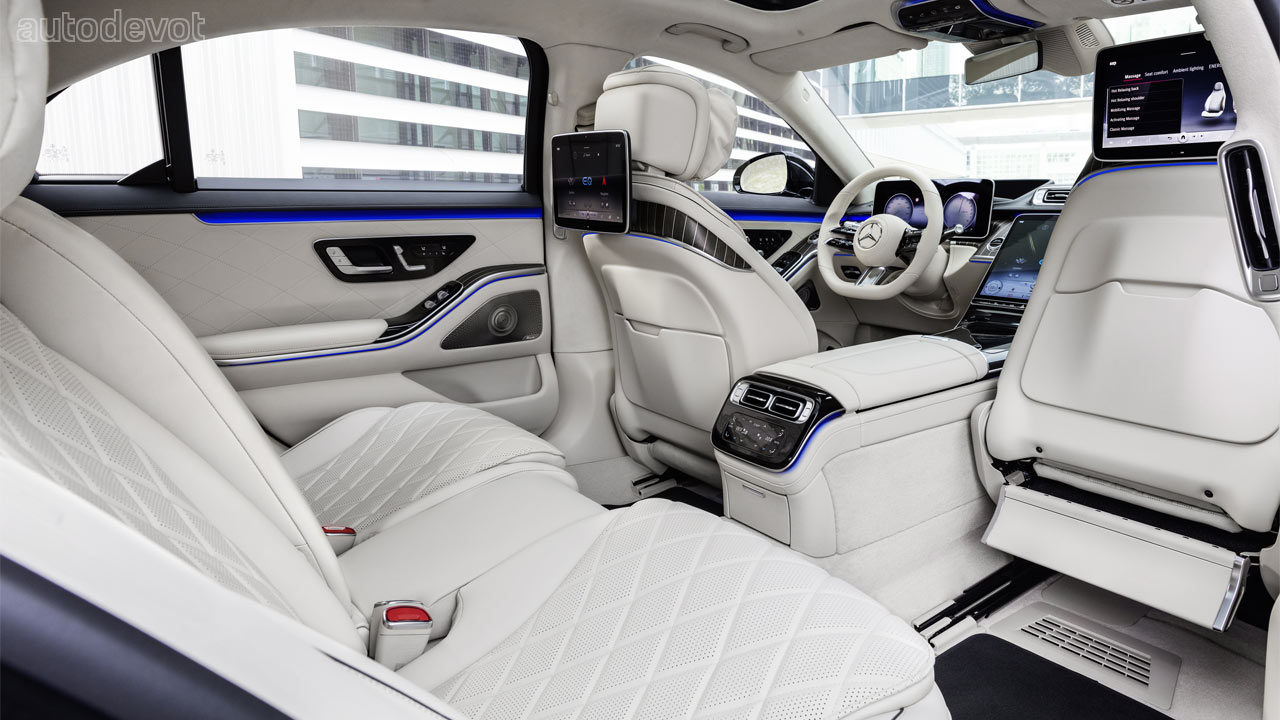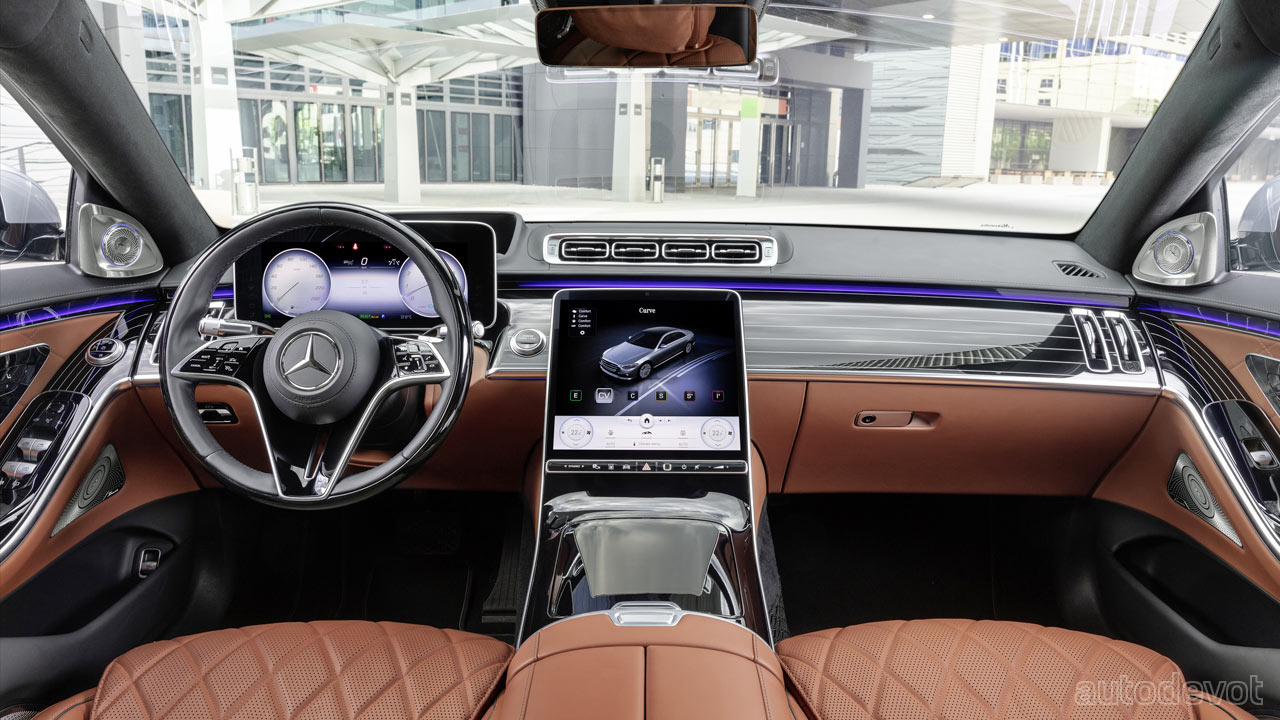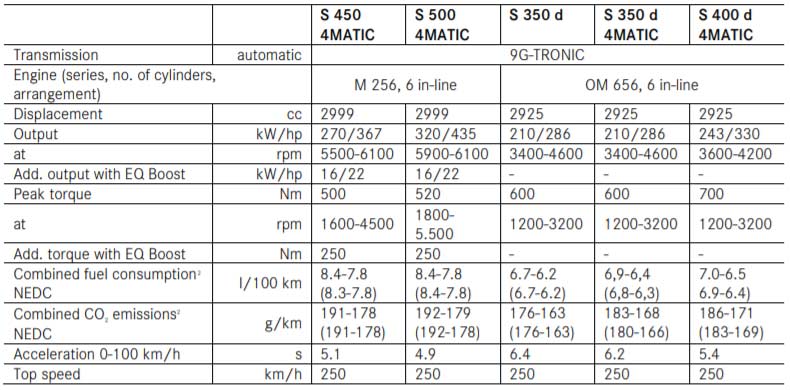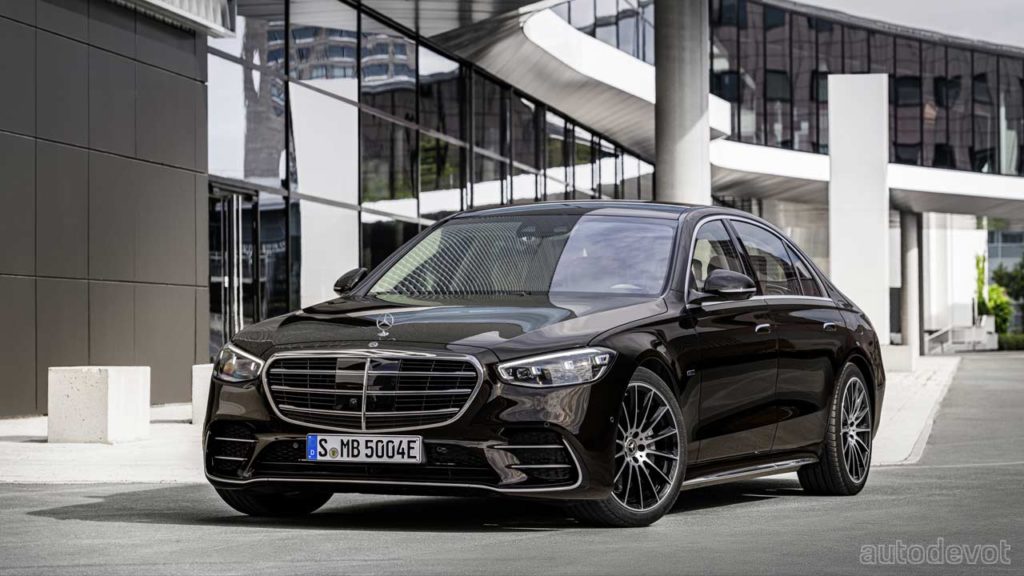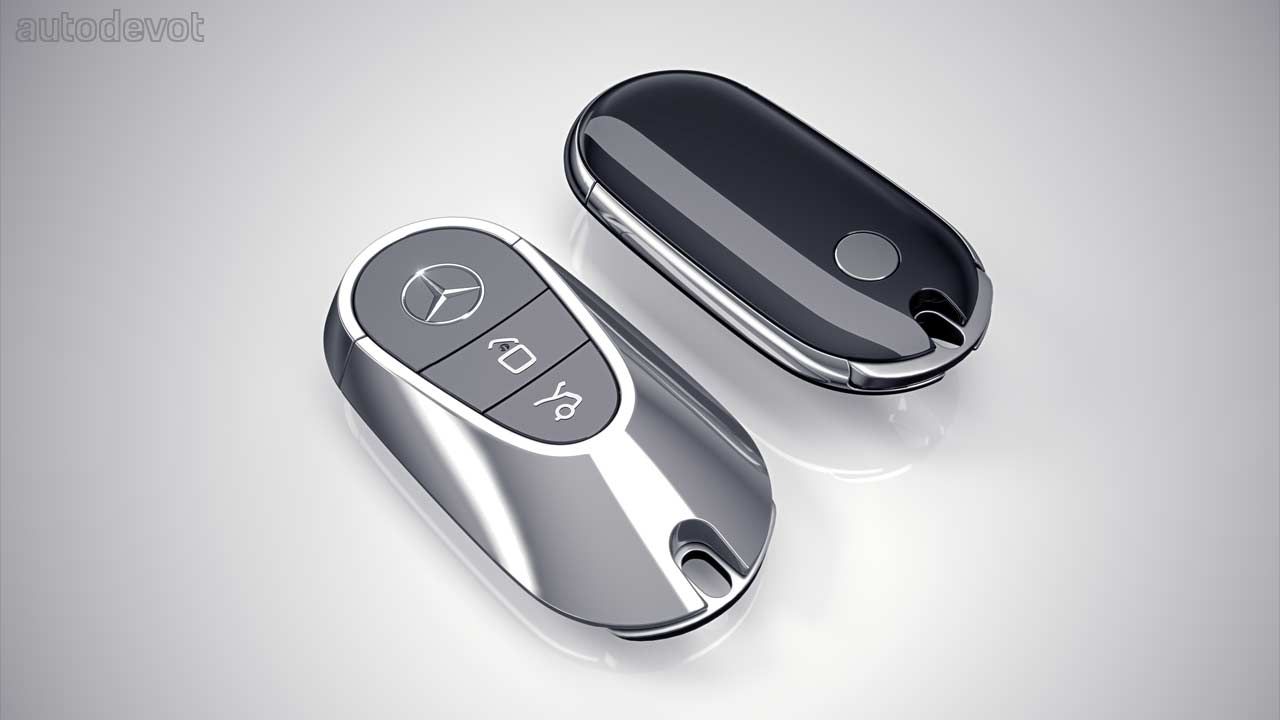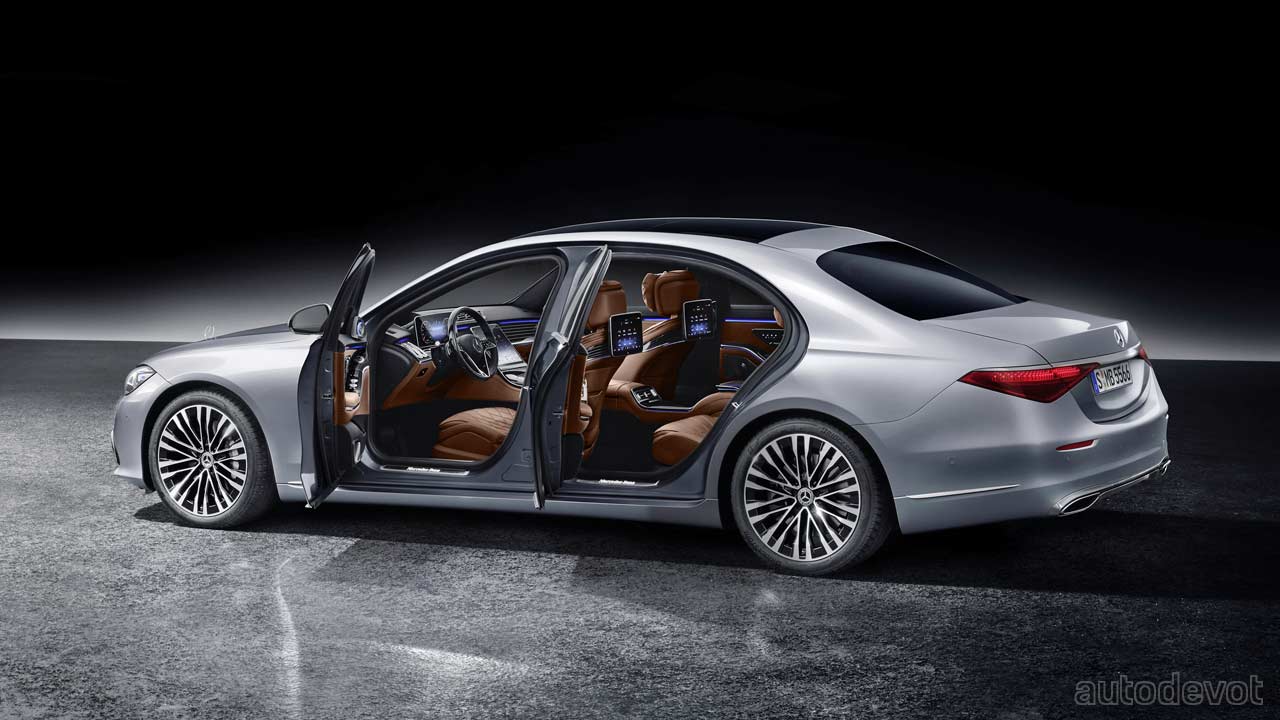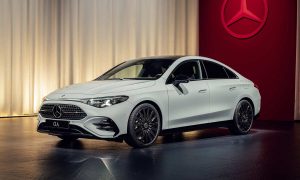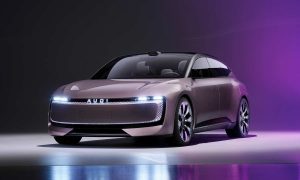The 7th generation Mercedes-Benz S-Class (W223) finally made its official debut yesterday, following an extensive teaser campaign that included showcasing its onboard technologies. Speaking of which, the new S-Class feels like it has been overloaded with technologies, but we’ll come back to that in a bit.
There are so many things to talk about; let’s begin with the design. Compared to the W222 model, the design is evolutionary. I mean, the new S-Class is still very much recognizable as an S-Class; it retains its majestic appearance. Despite a larger grille, it manages to not look ugly or shouty. Its sleek lines have resulted in a drag coefficient of just 0.22 Cd.
There’s no mistaking the S-Class for anything else on the road as it has now also grown in dimensions. Speaking of which, the new S-Class standard wheelbase measures 5,179 mm in length (+54 mm), 2,109 mm (-21 mm) in width including mirrors, and 1,503 mm in height (+10 mm). It boasts a wheelbase of 3,106 mm, which is a substantial increase of 71 mm over the outgoing model. If those numbers don’t impress you, there’s even a long wheelbase model that measures 5,289 mm long with a wheelbase of 3,216 mm.
Moving on to the exterior features, well, the flush-fitting door handles are in fact optional equipment. As standard, you’d get the regular grab/pull-type handles. If the standard Multibeam headlights with 84 LEDs won’t suffice, buyers can go for the optional Digital Light that has 3 powerful LED modules (per headlight unit), where the light is refracted by 1.3 million micro-mirrors which can be considered as pixels. A control unit with a powerful graphics processor uses a HDMI-like connection to relay a continuous video stream to the mirrors, and therefore the Digital Light can project symbols and information onto the road surface.
In case you haven’t noticed it already, the new S-Class boasts the optional rear-wheel steering too, available in two sub-options: 4.5° and 10°; in the latter, the wheel size is limited to 20-inches. The 10° option cuts down the turning circle by up to 1.9 metres, especially in the LWB model.
Moving on to the suspension, the new S-Class can be had with the optional E-Active Body Control suspension that works with the standard Airmatic air suspension and Road Surface Scan and ‘Curve’ functions. In short, the E-Active system regulates the damping and spring forces individually at each wheel, and not only counters body roll but also pitch and lift. And, if a side impact is imminent and unavoidable, the suspension raises the vehicle body in order to mitigate the damage and safeguard the occupants.
Would you like to have some car with your displays?
Mercedes had partially revealed the new S-Class interior with all the MBUX features on offer, in July. In case you missed that story, the folks at Mercedes have gone completely nuts in loading the technologies into the car, so much so that you’d think the new S-Class as a large, moving computer. There are up to five displays (6 if you count in HUD) with the optional 12.8-inch OLED central display at the front grabbing all the attention. A 11.9-inch display is standard. The rear seat occupants can either have 7.0-inch displays or 11.6-inch displays, both sizes are optional. There are two different Head-Up Displays on offer with the larger one supporting augmented reality (AR) content; the image appears virtually at a distance of 10 metres. A 12.3-inch driver display is standard, although a 3D driver display of the same size can be found in the options list.
There are things such as gaze control, gesture control, Natural Language Understanding (NLU) with 27 language support, active ambient lighting, 31-speaker Burmester 4D surround sound system (optional), 10 different massage functions, and 4-zone climate control (2-zone standard). The car can store up to 7 personal climate profiles, plus a guest profile.
Here’s another fun fact: up to 19 motors control the front seat comfort. As standard, the rear gets a three-seater bench seat, while there are optional Comfort seats with 19 to 37 degrees backrest angle and Executive seat with 19 to 43.5 degrees backrest angle.
As for materials, Mercedes said that the new S-Class uses more than 98 kg (216 lbs) of components made from sustainable materials. The number of components containing recyclates is now 120 – more than twice as many as in the outgoing model. Another 40 kg (88 lbs) or so are made from renewable raw materials. The floor mats are made of recycled nylon, branded as ‘Econyl’.
There’s a big list of safety and driver assistance systems such as Active Distance Assist Distronic, Active Steering Assist, Traffic Sign Assist, Active Lane Keeping Assist, Active Blind Spot Assist, Active Brake Assist, Evasive Steering Assist and so on. In addition, there are frontal airbags for both rear occupants for the first time.
The new S-Class also boasts a Level 3 automated driving capability called ‘Drive Pilot’, which will be available from the second half of 2021. If opted for a preinstallation of ‘Intelligent Parking Pilot’, the S-Class can park itself in suitable multi-storey car parks (market dependent). Related story here.
Powertrains
At launch, there’ll be S 450 4Matic, S 500 4Matic, S 350 d, S 350 d 4Matic and S 400 d 4Matic variants. The S 450 and S 500 petrol variants get the EQ Boost system with an additional 22 hp (16 kW) and 250 Nm (184 lb-ft) of torque for a short duration.
The petrol and diesel engines are 3.0L straight-six turbocharged units with 2,999 cc and 2,925 cc capacities, respectively. The gearbox is a 9-speed automatic that drives the rear wheels as standard unless equipped with 4Matic AWD system.
A V8 engine combined with a 48-volt mild-hybrid system will be available at a later date. A plug-in hybrid variant (photos above) with an all-electric range of around 100 km (62 mi) will join the lineup in 2021.
Those interested to read more in detail, the full, excruciatingly long 75-page press information, can do so by visiting here.

Leave a Reply
Note: Comments that are unrelated to the post above get automatically filtered into the trash bin.
